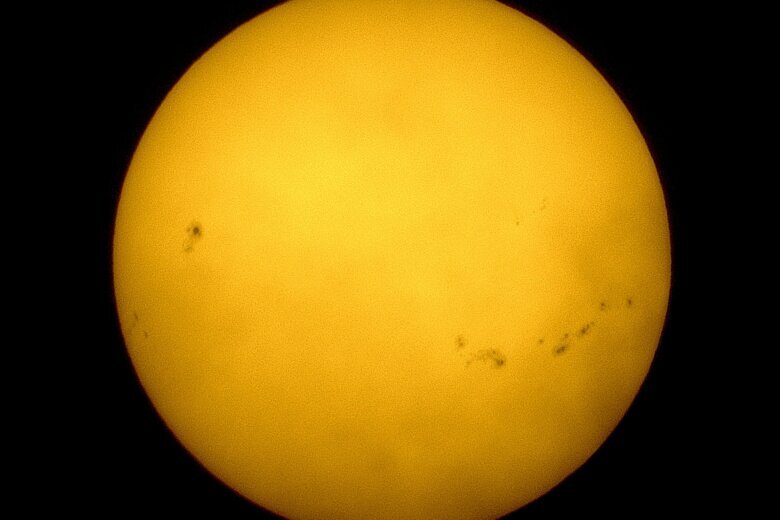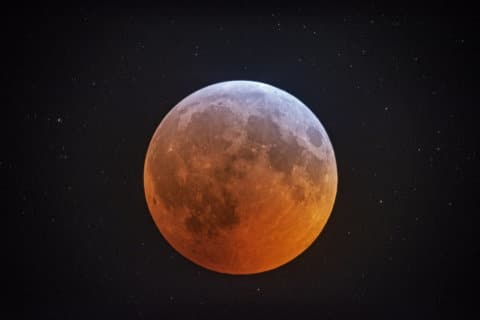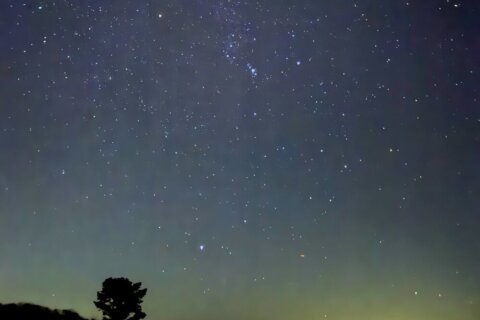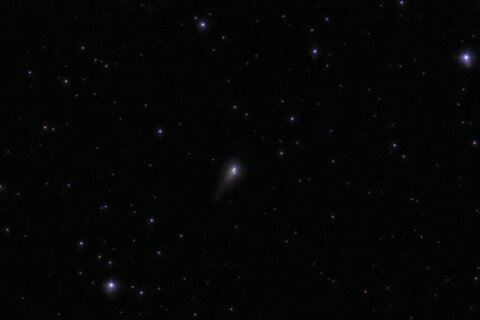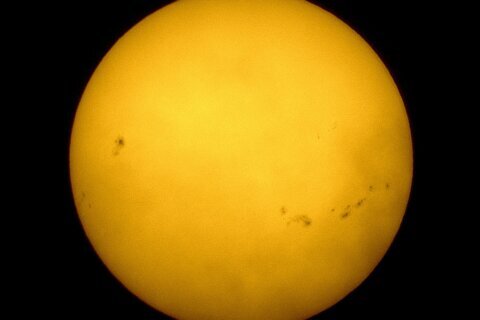
Once more to the delight of skywatchers and wannabe Northern Lights chasers, space weather conditions are currently predicted by the National Oceanic and Atmospheric Administration Space Weather Prediction Center (SWPC) to be favorable this weekend for seeing Aurora.
SWPC Forecasters have issued G3 (Strong) Geomagnetic Storm Watches for Friday, Oct. 4, as a pair of coronal mass ejections, or CMEs, are expected to arrive over the next three days. The CMEs occurred on the sun in the past several days, which were caused by the strongest solar flares in the current Solar Cycle 25. Solar Cycle 25 is due to peak next summer, and there are indications that the next Solar Cycle is already happening.
This geomagnetic storm and associated Aurora event forecasted is not predicted to reach the historic levels of May 10, 2024. Far more likely, we could experience an event like we had in March, which involved a similar G3 (Strong) geomagnetic storm.
For the D.C. area, it’s possible that skygazers might detect faint Aurora to the north. But with the presence of clouds and Aurora conditons that may not be strong enough, it might be hard to detect their presence.
Saturday and Sunday night are predicted to be more favorable for Aurora conditions, and the weather might be more conducive, as well.
It will be worth taking a look to the north from a dark sky site with a clear horizon at times when G2 and G3 levels are reached.
Below are some dates and time where and when there might be sightings:
Oct. 4
- 5 to 8 p.m. – 6.67 (G3 or strong)
- 11 p.m – 6 (G2 or moderate)
Oct. 5
- 2 a.m. – 6 (G2 or moderate)
- 2 a.m. to dawn – 6.33 (G2)
- 8 p.m. to 11 p.m. – 6.33 (G3)
- 11 p.m. – 6.67 (G3)
Oct. 6
- 2 a.m. to dawn – 6.33 (G2)
You might be able to visually detect some color in the sky if Aurora are present, but they would likely be low on the northern horizon. Wide field binoculars will help your search.
Use a camera or smartphone that can take exposures of several seconds – including using “Night Sky” or “Low Light” settings if your camera has them – of the northern horizon. Steady the camera or use a tripod for best image results. The camera may capture Aurora that your eyes did not.
Check the weather for sky conditions, including WTOP Weather and NOAA, as well as space-related social media sites for updates.
Our best bet is to monitor WTOP Weather and NOAA for sky conditions, and space-related social media sites, such as Dr. Tamitha Skov, EarthSky and space.com for updates.
Spaceweather.com is a site I check every day just as I do my local weather. It has a daily snapshot of what the space weather in the solar system is going to be like and a current image of the sun.
With our terrestrial weather being such a factor in our daily lives, we are also directly affected by space weather, which can produce a variety of events, including Friday’s geomagnetic storm and the Aurora.
Space weather, like terrestrial weather, is caused by Earth’s interaction with the sun.
While we can count on the sun for life-giving warmth and energy, it is generally well-behaved, the sun undergoes an 11-year solar cycle and can affect space wather throughout the solar system.
The sun is a 4.5 billion year-old-star that people have been monitoring since Galileo. Today, humans have a fleet of spacecraft that monitor the sun and Space weather.
The sun had an episode of disturbed behavior in 1859, that if it were to occur today, could adversely affect the world.
In 1859 on Sept. 1, the sun experienced a solar storm episode that was observed by solar astronomer Richard Carrington that ended up bearing his name – the Carrington Event. This was a watershed event in solar astronomy and also the sun’s affect on the Earth as nothing like it has been seen since.
If a Carrington-level solar event were to happen today, the affect on modern society’s infrastructure could be potentially catastrophic, especially the electrical grid which powers everything else. If you think this is unlikely or too sci-fi to be true, I suggest you read the report by the National Academies of Science published in 2008.
Last year, the sun had a very powerful space weather event on March 12, which, fortunately for us occurred on the far side of the sun.
Follow my daily blog to keep up with the latest news in astronomy and space exploration. You can email me at skyguyinva@gmail.com.
Get breaking news and daily headlines delivered to your email inbox by signing up here.
© 2024 WTOP. All Rights Reserved. This website is not intended for users located within the European Economic Area.

